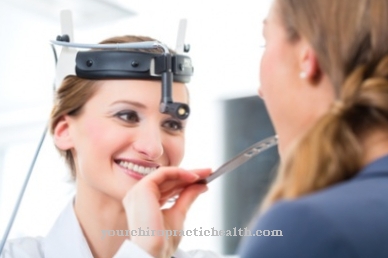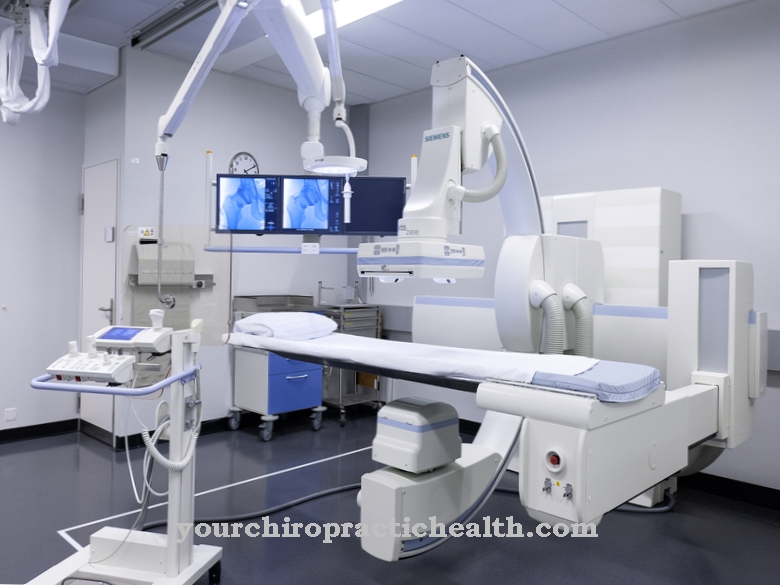For every 1,000 births, an average of two children are born with a hearing impairment. Hearing problems can seriously affect a child's development. In order to be able to assess hearing abilities at an early stage, the Newborn hearing screening introduced.
What is newborn hearing screening?

Newborn hearing screening is an early diagnosis test to diagnose hearing disorders in newborns as early as possible. Hearing disorders can massively hinder the development of children. Only a child who hears normally has the chance to learn to speak normally. The ability to hear properly depends on the emotional development, the ability to communicate, the willingness to learn and the success of learning. Hearing deficits in babies and toddlers can have development-inhibiting consequences in private life and in professional development.
Hearing enables children to differentiate their environment from day one. Hearing is the basis for the entire language development and thus for the later ability to read and write. In rare cases, hearing disorders are congenital. However, they can also be triggered by diseases. If a hearing impairment is revealed by newborn hearing screening, it can be compensated for even in young children with modern hearing aid technology. The screening ensures that children affected by hearing deficits have an easier start in life.
Function, effect & goals
Newborn hearing screening is carried out in the child's first days of life in the maternity hospital. The examination is not associated with impairment or pain for the child. The test can even be carried out on a sleeping child. The newborn does not have to react actively to any stimuli.
Today there are two methods of measurement that can be used to determine hearing deficits. One method is based on the measurement of otoacoustic emissions (OAE). This measurement method uses the ability of the human ear to not only receive noises, but also to emit sound.
For the examination as part of the newborn hearing screening, a tiny probe is placed in the outer auditory canals of the ears, which emits soft clicking noises. The vibrations of the clicking sounds are transmitted to the structures of the inner ear. The sound stimulates the sensory cells in the inner ear. The test for the newborn takes advantage of the fact that the sensory cells send back an echo of the sound waves received. These vibrations are registered by the probe in the external auditory canal, on which a small microphone is installed to pick up the sound waves from the inner ear. The strength of the vibrations is measured. If there are no sound waves from the inner ear or if only very weak signals are registered, this can indicate an existing hearing impairment.
If there is an indication of disturbances in the transmission of sound to the sensory cells from the measurement results, it does not necessarily have to be a pathological condition. The measurement should be repeated some time later. Background noise, fluid in the middle ear due to inflammation or if the child is very restless during the measurement can falsify the test results. Another approved method of newborn hearing screening, in which no activity is expected from the child, is the so-called brain stem audiometry. This is a special form of an EEG. In this procedure, the activity of the auditory nerve is tested in the transmission of acoustic stimuli. Every function of nerves in our organism causes measurable electrical activity. During the test, small measuring electrodes are attached to the newborn's head.
With this procedure, too, clicking noises are emitted via the external auditory canal with a probe. The electrodes can be used to measure the electrical activity as the sound waves of the auditory nerve are transmitted from the inner ear to the auditory center in the brain. In the case of measured values outside the normal range, this can be interpreted as an indication of possible hearing loss. With this method of measuring hearing, the child should sleep as much as possible. The more restless and active a person is, the more the brain, central and peripheral nervous systems produce electrical signals. When you are asleep, it is easier to assign the signals to the activity of the auditory pathway from the ear to the brain.
You can find your medication here
➔ Medicines for earache and inflammationRisks, side effects & dangers
If the newborn hearing screening detects underperformance in hearing, both measurement methods can be used to determine which area of the hearing system is the cause of the deficit. While OAE shows damage to the sensory cells in the inner ear, brainstem audiometry reveals problems in the auditory pathway and thus the auditory nerve. This distinction is important for prescribing the right hearing aid. However, negative test results should not be overestimated if they were detected in the first few days after birth.
A hearing impairment does not necessarily have to be inferred from these measured values outside the norm. On the other hand, even inconspicuous measurement results are no guarantee of the child's unrestricted hearing. Experience with newborn hearing screening has shown that a number of children are noticeable through abnormal measurement results. Only a very small percentage of the children tested with negative results actually suffer from a hearing impairment. Nevertheless, the screening should be an indication to pay more attention to the hearing ability of the new human being. If the test shows the first abnormal findings, both measurement methods, OAE and brainstem audiometry, should be performed. The measurements should be checked after some time with the repetition of the tests, before further treatment is carried out.













.jpg)

.jpg)
.jpg)











.jpg)